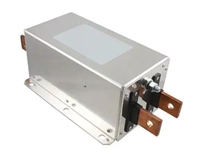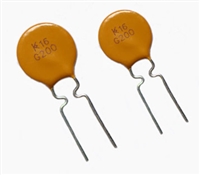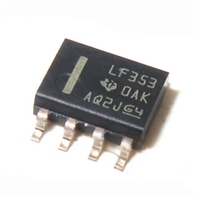FM25P16 - 16Kb Ultra Low Power FRAM
have hardware SPI ports allowing a direct interface.
It is quite simple to emulate the port using ordinary
port pins for microcontrollers that do not. The
FM25P16 operates in SPI Mode 0 and 3.
OVERVIEW
The FM25P16 is a serial F-RAM memory. The
memory array is logically organized as 2,044 x 8 and
is accessed using an industry standard Serial
Peripheral Interface or SPI bus. Functional operation
of the F-RAM is similar to serial EEPROMs. The
major difference between the FM25P16 and a serial
EEPROM with the same pinout is the F-RAM’s
superior write performance.
The SPI interface uses a total of four pins: clock,
data-in, data-out, and chip select. A typical system
configuration uses one or more FM25P16 devices
with a microcontroller that has a dedicated SPI port,
as Figure 2 illustrates. Note that the clock, data-in,
and data-out pins are common among all devices.
The Chip Select and Hold pins must be driven
separately for each FM25P16 device.
MEMORY ARCHITECTURE
When accessing the FM25P16, the user addresses
2,044 locations of 8 data bits each. These data bits
are shifted serially. The addresses are accessed using
the SPI protocol, which includes a chip select (to
permit multiple devices on the bus), an op-code, and
a two-byte address. The upper 5 bits of the address
range are ‘don’t care’ values. The complete address
of 11-bits specifies each byte address uniquely.
For a microcontroller that has no dedicated SPI bus, a
general purpose port may be used. To reduce
hardware resources on the controller, it is possible to
connect the two data pins (SI, SO) together and tie
off (high) the Hold pin. Figure
configuration that uses only three pins.
3 shows a
Protocol Overview
The top four address locations (0x7FC - 0x7FF)
are not user-accessible. A write to these locations
will be ignored by the device, and a read to these
locations will return 0x00.
The SPI interface is a synchronous serial interface
using clock and data pins. It is intended to support
multiple devices on the bus. Each device is activated
using a chip select. Once chip select is activated by
the bus master, the FM25P16 will begin monitoring
the clock and data lines. The relationship between the
falling edge of /CS, the clock and data is dictated by
the SPI mode. The device will make a determination
of the SPI mode on the falling edge of each chip
select. While there are four such modes, the
FM25P16 supports Modes 0 and 3. Figure 4 shows
the required signal relationships for Modes 0 and 3.
For both modes, data is clocked into the FM25P16 on
the rising edge of SCK and data is expected on the
first rising edge after /CS goes active. If the clock
begins from a high state, it will fall prior to beginning
data transfer in order to create the first rising edge.
Most functions of the FM25P16 either are controlled
by the SPI interface or are handled automatically by
on-board circuitry. The access time for memory
operation is essentially zero, beyond the time needed
for the serial protocol. That is, the memory is read or
written at the speed of the SPI bus. Unlike an
EEPROM, it is not necessary to poll the device for a
ready condition since writes occur at bus speed. So,
by the time a new bus transaction can be shifted into
the device, a write operation will be complete. This is
explained in more detail in the interface section.
Users expect several obvious system benefits from
the FM25P16 due to its fast write cycle and high
endurance as compared with EEPROM. In addition
there are less obvious benefits as well. For example
in a high noise environment, the fast-write operation
is less susceptible to corruption than an EEPROM
since it is completed quickly. By contrast, an
EEPROM requiring milliseconds to write is
vulnerable to noise during much of the cycle.
The SPI protocol is controlled by op-codes. These
op-codes specify the commands to the device. After
/CS is activated the first byte transferred from the bus
master is the op-code. Following the op-code, any
addresses and data are then transferred. Note that the
WREN and WRDI op-codes are commands with no
subsequent data transfer.
Important: The /CS must go inactive (high) after
an operation is complete and before a new op-code
can be issued. There is one valid op-code only per
active chip select.
Serial Peripheral Interface – SPI Bus
The FM25P16 employs a Serial Peripheral Interface
(SPI) bus. It is specified to operate at speeds up to 1
MHz. This high-speed serial bus provides high
performance serial communication to
a
host
microcontroller. Many common microcontrollers
Rev. 1.0
Dec. 2011
Page 3 of 14






 电子元器件中的网络滤波器、EMI滤波器与EMC滤波器:分类关系与功能详解
电子元器件中的网络滤波器、EMI滤波器与EMC滤波器:分类关系与功能详解

 NTC热敏电阻与PTC热敏电阻的应用原理及应用范围
NTC热敏电阻与PTC热敏电阻的应用原理及应用范围

 GTO与普通晶闸管相比为什么可以自关断?为什么普通晶闸管不能呢?从GTO原理、应用范围带你了解原因及推荐型号
GTO与普通晶闸管相比为什么可以自关断?为什么普通晶闸管不能呢?从GTO原理、应用范围带你了解原因及推荐型号

 LF353数据手册解读:特性、应用、封装、引脚说明、电气参数及替换型号推荐
LF353数据手册解读:特性、应用、封装、引脚说明、电气参数及替换型号推荐
